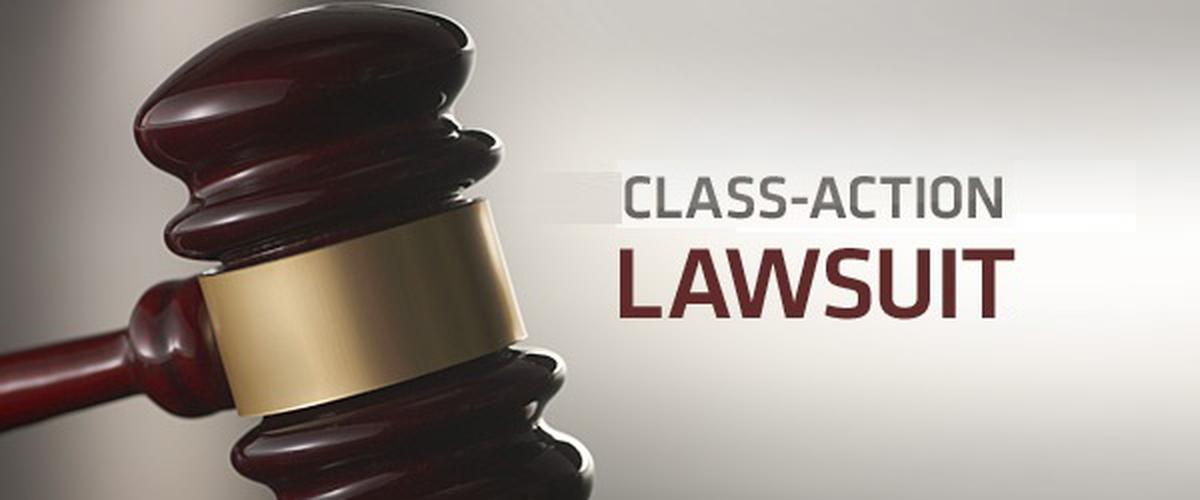BioVie Class Action Lawsuit Unveiled: Your Legal Resource
Wiki Article
Checking Out Course Action Suits: What You Required to Know
Course action legal actions have become significantly common in today's lawful landscape, with individuals signing up with forces to look for redress versus companies and organizations. In this conversation, we will explore the ins and outs of course activity suits, shedding light on their interpretation, the demands for filing, and the possible advantages and drawbacks included.The Definition of Course Activity Lawsuits
Just what is the definition of a class activity lawsuit? A course activity claim is a lawsuit filed by a team of individuals that have similar cases versus a defendant. It allows a large number of people, referred to as the class participants, to collaborate and pursue their cases collectively, as opposed to each individual filing a different lawsuit. When the number of possible complainants is too big for private claims to be sensible, Course activity lawsuits are usually brought. They are generally used in situations including customer defense, product liability, protections fraudulence, and employment concerns.Among the crucial elements of a course activity claim is that the lead plaintiff, likewise called the class rep, represents the interests of all the class participants. The court appoints the lead plaintiff based upon their capacity to rather and properly stand for the course. The lead complainant functions closely with the course activity lawyer to construct a solid situation and seek payment or other remedies on part of the whole class.
In order for a class activity legal action to continue, the court should certify the class. This means that the court establishes that the claim meets certain demands, such as numerosity (a huge adequate variety of course members), commonality (common inquiries of legislation or reality), typicality (the insurance claims of the lead complainant are normal of the course), and adequacy of depiction (the lead plaintiff and course counsel are qualified of representing the course's passions) When the course is certified, the claim can move onward, and any type of judgment or negotiation reached will relate to all course members unless they pick to opt-out.
Class activity lawsuits serve a vital objective in offering accessibility to justice for people who may not have the sources to seek their claims separately. They additionally promote effectiveness in the lawful system by consolidating similar cases into a single activity, reducing the problem on both the court and the events involved.
Demands for Filing a Class Action Lawsuit

An additional need is that the course needs to be completely countless. The specific variety of class members needed might vary depending upon the territory and the nature of the situation. Nonetheless, it is usually anticipated that the course needs to be big enough that joining all the private plaintiffs into a solitary legal action is more efficient than having multiple separate suits.
Additionally, it is vital that the course representative, who is the specific or entity bringing the legal action in support of the class, has common cases and defenses to those of the class participants. The agent needs to additionally have the ability to appropriately and relatively represent the rate of interests of the whole class.

Benefits and Downsides of Course Activity Suits
Class action claims provide both advantages and disadvantages for plaintiffs and offenders associated with the lawful process. On the one hand, among the substantial advantages of class activity suits is that they provide a economical and efficient way for people with similar cases to go after justice collectively. By settling many similar instances into one lawsuit, course actions simplify the legal procedure and save time and resources for both complainants and defendants.Another advantage of course action legal actions is that they enable people with restricted sources to seek settlement for their damages. In instances where the prospective recuperation is small, private legal actions may not be financially viable. By joining forces in a class activity, complainants can pool their resources and boost their opportunities of obtaining a fair resolution.
Furthermore, class activities can promote social modification by holding firms responsible for their activities. By bringing attention to prevalent misconduct or defective items, class actions can push companies to alter their methods, boost item security, or apply reforms.
Nonetheless, class activities also have disadvantages. her explanation One potential downside is that private complainants might have restricted control over the litigation procedure and the supreme outcome of the situation. The lead complainants and their attorneys normally make essential choices on part of the whole class, which might not constantly line up with the private interests of each class participant.
In addition, course actions can be extensive and lengthy, usually taking years to get to a resolution. The complexity and size of these lawsuits can bring about hold-ups and extended litigation, which can be frustrating for both offenders and plaintiffs seeking a prompt resolution.
Actions Entailed in a Course Action Legal Action
The process of a course action suit generally starts with the identification of a potential course and the filing of a complaint. As soon as a group of people who share similar cases versus a defendant is recognized, the lead complainant, or class representative, submits a grievance on behalf of the whole class. This complaint details the supposed wrongdoing and looks for problems or other alleviation for all participants of the class.After the complaint is submitted, the court will determine whether the instance satisfies the requirements for course certification. These requirements usually include numerosity (a big enough course), commonality (comparable legal insurance claims), typicality (the lead plaintiff's cases are depictive of the class), and competence of representation (the lead complainant and their lawyer can adequately represent the course's rate of interests)
If the court licenses the class, notification is provided to all prospective course participants, providing the chance to opt-out if Related Site they wish to pursue their very own specific claims - Archer-Daniels-Midland class action lawsuit. If an enough number of class participants remain, the situation will certainly proceed to the discovery stage, where both sides collect proof and details relevant to the claims
Following discovery, the celebrations may take part in negotiation arrangements or continue to test. If the situation mosts likely to test and the course dominates, the court will certainly establish the appropriate damages or relief to be awarded to the class members.
Recent Site Class Action Suits
With a solid understanding of the steps associated with a course action suit, it is now essential to analyze some recent site situations that have actually made a significant impact in the legal landscape. Future FinTech class action lawsuit. These instances have not just formed the method class action suits are conducted but have actually likewise caused changes in various industriesOne such spots instance is the Volkswagen discharges scandal, which led to the largest course action settlement in auto background. This deception impacted millions of customers worldwide, leading to a course action suit.
One more remarkable case is the Johnson & Johnson talcum powder claim. Thousands of females filed claims versus the company, asserting that their talcum powder items caused ovarian cancer cells.
These current site instances demonstrate the power of course action legal actions in holding corporations answerable for their actions and seeking justice for afflicted people. They work as examples of exactly how course activity lawsuits can produce considerable modifications and shield the rights of consumers.
Conclusion
Finally, course activity claims are a lawful device that allows a group of people to jointly look for justice for a common grievance. While they offer several benefits such as efficiency and cost-effectiveness, there are likewise disadvantages such as possible for minimal settlement and lengthy legal procedures. Recognizing the requirements and steps entailed in submitting a class action legal action is vital for people looking for to pursue this legal avenue. Recent spots course activity lawsuits have highlighted the significance of such cases in supporting for customer legal rights and corporate accountability.One of the vital components of a class activity claim is that the lead plaintiff, additionally understood as the class rep, represents the passions of all the class participants.In order for a redirected here class action legal action to proceed, the court has to accredit the class. This suggests that the court establishes that the claim meets specific requirements, such as numerosity (a huge sufficient number of course members), commonality (typical questions of legislation or fact), typicality (the cases of the lead plaintiff are typical of the course), and adequacy of depiction (the lead complainant and class advise are capable of standing for the course's interests) When the course is accredited, the legal action can move ahead, and any kind of judgment or settlement got to will use to all class members unless they pick to opt-out.
The process of a course activity lawsuit commonly begins with the recognition of a possible class and the filing of an issue.
Report this wiki page